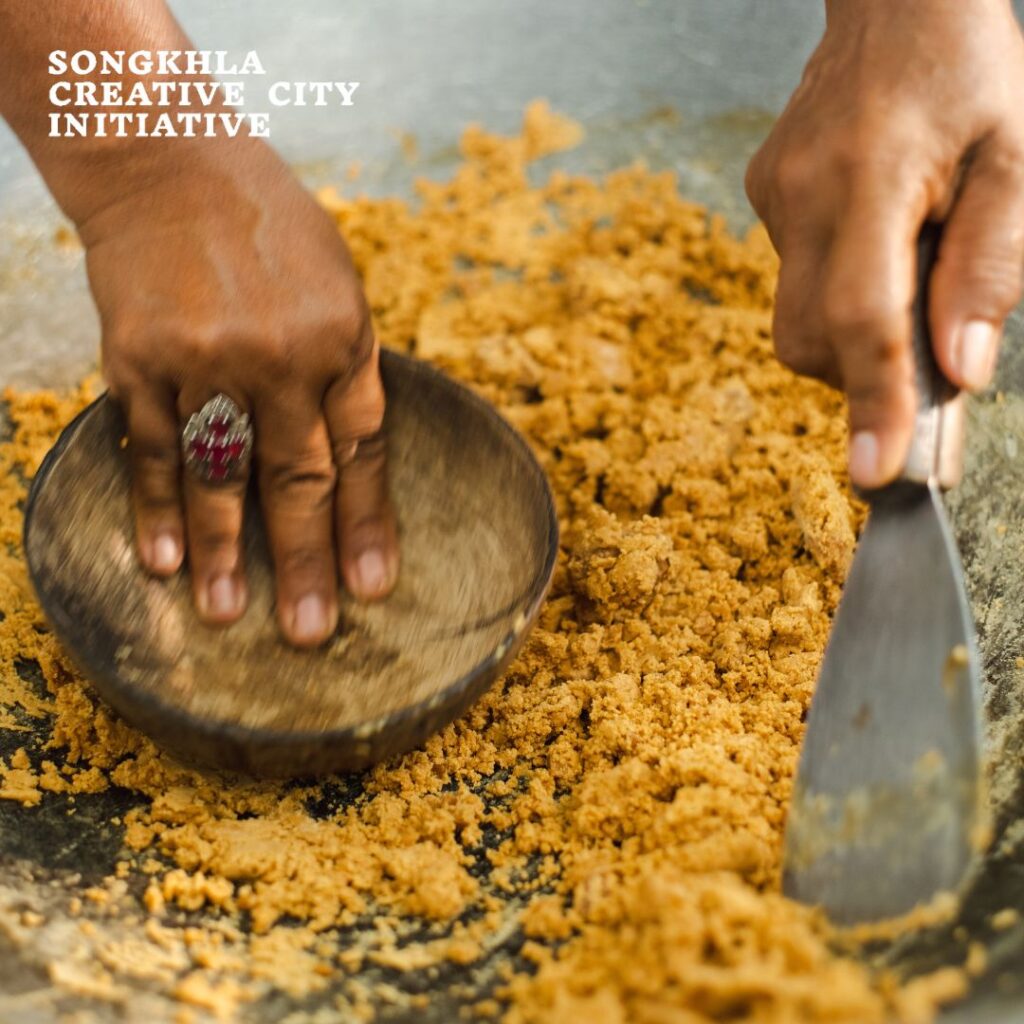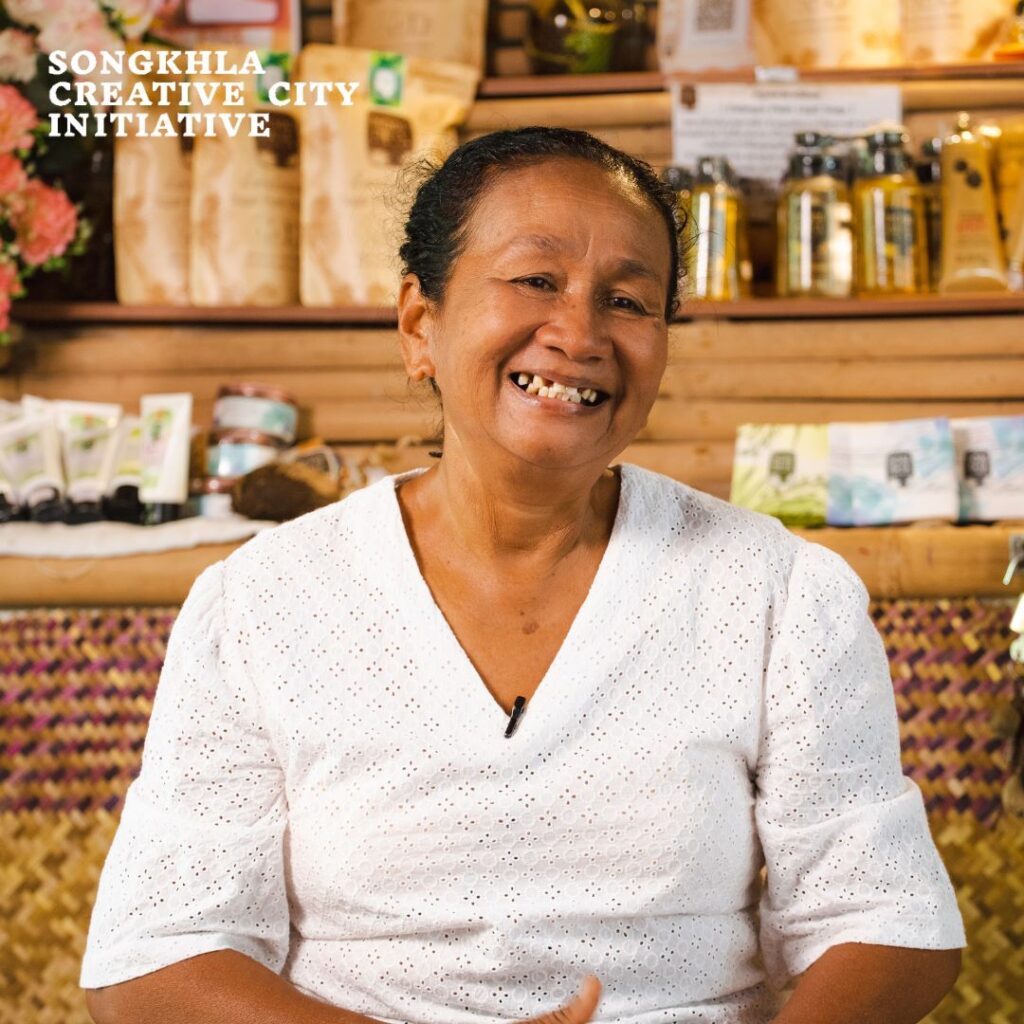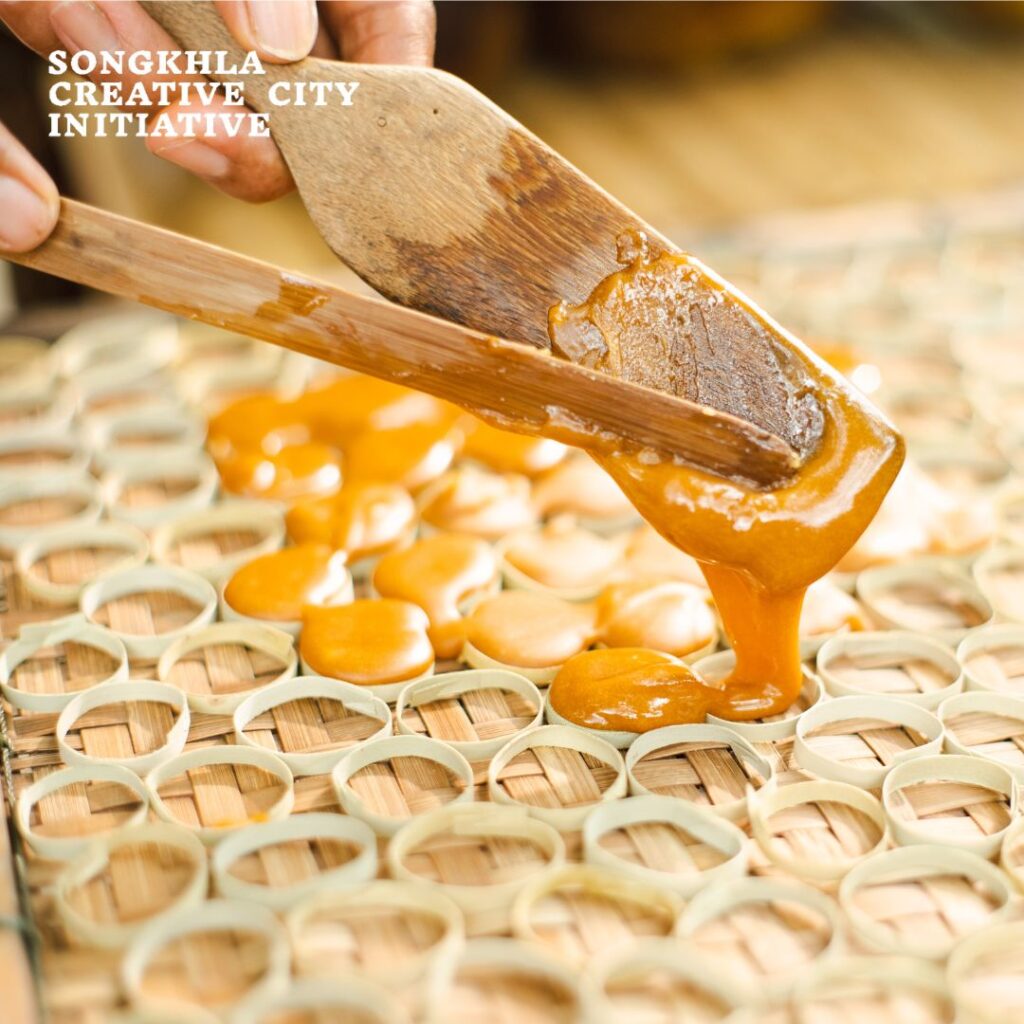Visitors to the Sating Phra Peninsula are greeted with a unique and beautiful landscape. Rows of sugar palm trees line the green embankments surrounding rice fields. These are important economic plants that provide food and means of livelihood for local people.
Provided with resources from sugar palm, rice fields, and the ocean, the people are intimately connected with the way of life of Nod Na Lae. For instance, the end of the traditional rice farming season (harvesting rice using sheep) coincides with the blossoming of sugar palms. People climb the trees to collect fresh sugar from the palm fruit for cooking, either in raw, rounded or powdered form. Likewise, when the sugar palms finish blossoming, the people head to Songkhla Lake to catch fresh shrimp, shellfish, crabs, and fish.

This seasonal cycle has given rise to many unique local dishes, such as yam hua nod, stir-fried spicy pla mi lang, pla mi lang sour curry, boiled giant river prawns with honey, yam yum nod, stir-fried prawns hua nod, and various kinds of dessert, such as floating palm fruit, palm fruit in fresh coconut milk, palm cake, khanom pim, khanom krok (paem chi), and steam paan, among many others.
Auntie Rom – Mrs. Poonsap Chu Keaw President of the Tan Ta Nod Na Lae Community Enterprise, village No. 7, Tha Hin Subdistrict, Sathing Phra District, Songkhla Province, says that a distinctive feature of toddy palm in the Sating Phra Peninsula is the soil substrate containing sediment deposits, which lends a stronger flavor to the sugar compared to other places. Three types of sugar palm are cultivated: Ka, Khao, and Khamin, featuring large and sweet heads of fruit.

The local production process of raw and powdered palm sugar emphasizes meticulousness throughout each step, in order to obtain pure sugar without granulated particles. It starts by climbing the trees to collect fresh sugar from the flower heads, using a sharp knife to cut at the trunk, which is then poured into tubes of split bamboo with a piece of teak at the bottom end to prevent the sugar from souring (acting as a natural preservative). When six full drums have been filled, they are placed on a large lotus leaf pan over a wooden stove to intensify the aroma. The heat must be kept constant throughout the entire 6 hour simmering process, after which a single drum of ‘toddy palm honey’ is produced.

Next, around three scoops of toddy palm honey are heated in a pan over a high flame, which is stirred constantly until ready using a utensil made from the root of the Lamphu tree, due to its light weight. This is then dropped into the circular lining of palm leaves. When cooled, it is placed into a box with a tight-fitting lid for long-term storage. After the flame is extinguished, the residue remaining at the bottom of the pan is mashed into a fine powder using a coconut shell and left to cool before being packed into bags.

“Every part of the sugar palm can be used and processed, including the roots, which are used to make a medicine called “Tal Kha Muay”, the trunk, which provides timber for building houses, the bark, which is pounded to extract the fibers used for making bags and hats, the stems, which can be used to make fences and chairs, and the leaves, which are woven to make roof coverings, bags, food containers, and toys, etc. Various other products can also be developed, such as soap, serum, lotion, and even cakes, which exemplifies an extension of existing knowledge into important innovations and a source of learning, whilst also promoting tourism within the community” – Auntie Rom.